
Please Remix this template for your purposes.
- Subject:
- Environmental Literacy and Sustainability
- Material Type:
- Unit of Study
- Author:
- Sandy Benton
- Date Added:
- 01/26/2022

Please Remix this template for your purposes.
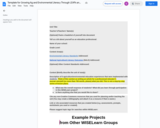
Please make a copy of this template.
Customize it for your project.
Send your completed project to sandy@fieldedventures.org by May 30, 2024.
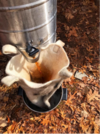
Author: Lucille Burr GrignonCurrently teaching from my Indigenous Homestead/Gardens. Ancient Roots Homestead in Bowler, WisconsinAncient Roots Homestead collaborates with students, elders, community members in the surrounding Tribal Nations– both Menominee and Stockbridge-Munsee and beyond. We recognize all students learn in different ways. Some students join us in person, while others join us virtually. People of all ages are invited to tell stories, garden, connect and reconnect, preserve food, make music, create art, and learn different Indigenous life skills, and more.Maple Sugar season is a beautiful time for learning. So much is happening in the world around us, all we have to do to learn is observe. The seasons change, the trees grow and develop. From the tapping of the trees, boiling down, canning, educating, and processing. It is very beautiful from beginning to end. The lessons learned while working with maple trees can be directly applied and used in our own lives.The culturally-relevant text sets offer different perspectives for students to see as well as wonderful conversation starters. Students learn of different careers within the Indigenous World. Some of those careers being: Traditional Seed Keepers, Gardeners, Knowledge Keepers, Storytellers, and More!
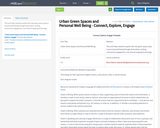
This unit helps students explore the role green spaces play in personal well being through observation, writing, community engagement, and shared mapping technology.

Unit Title: Urban Runoff and Its Impact on the Community and BeyondAuthor: Anthony Jordan, Franklin High School, Franklin Public SchoolsGrade Level: 9-12Context: This unit of study combined mathematics, environmental science, and literacy while also incorporating a real world context. Students began the unit of study by looking at specific examples of environmental impacts of rainwater runoff and the contaminants they contain. In addition, students used these articles to build context knowledge and dive deeper through research on the reasons behind stormwater runoff, the systems in place, and solutions to solve this problem on a local, national, and global level. Afterwards students began to incorporate how to calculate the amount of stormwater runoff and utilized GIS and google earth to develop a deeper understanding of how to accurately calculate the area of impervious surfaces. Finally, students compared the amount of runoff calculated and were able to construct a project on how to address building a greener school.
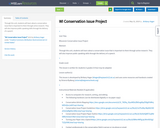
Through this unit, students will learn about a conservation issue that is important to them through active research. They will also improve public speaking skills through the delivery of a speech.

This is the template for your Numbers By Nature OER project.You may find it easiest to copy and paste the content of this resource into a Google or Word document to create your OERs.Please change the title and add the required content as well as any other non-copyrighted content you would like to share with other educators. You may utilize copyrighted materials in your instruction. Please share the citations of these materials, but do not include the content of copyrighted materials in your OERs.
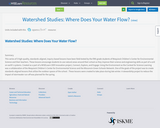
This series of 5 high-quality, standards-aligned, inquiry-based lessons have been field-tested by the fifth grade students of Wequiock Children's Center for Environmental Science and their teachers. These lessons encourage students to use natural areas around their school as they improve their science and engineering skills as part of a unit on earth's systems. Created as a part of a WISELearn OER Innovation project, Connect, Explore, and Engage: Using the Environment as the Context for Science Learning was a collaboration of the Wequiock Children's Center for Environmental Science and the Wisconsin Green Schools Network. One of the goals of the project was to create standards-aligned lessons that utilize the outdoor spaces of the school . These lessons were created to take place during late winter. A stewardship project to reduce the impact of stormwater run-off was planned for the spring.

Learning about our natural resources and how to maintain and improve them is a common thread throughout the K-6th grades. In fifth grade, students learn about soil composition, soil health, how to regenerate soil, and how to test the soil. Based on the soil test and composition determination/s, we then discuss why we received the results we did, what the results mean, and why different samples from the same geographical area may vary.They learn about soil depletion, the importance of regeneration and management of the soil, and whether to use natural fertilizers or synthetic bagged fertilizers to build up the soil and for plant health. During the process, they learn what N, P, and K mean and how to read the fertilizer bag.
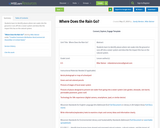
Students learn to identify places where rain soaks into the ground or runs off into a sewer system and describe the impact this has on the natural system.

Author: Lela Schwitzer, Bonduel Elementary School, BonduelGrade: 1stIn the CKLA Knowledge Domain 8 Animal Habitats, I used Native authors, an Indigenous documentary on sturgeon, our school woods/stream, a local sturgeon webcam, and my Menominee heritage to extend students’ knowledge of the freshwater habitat to promote their environmental capacity to protect area waters similarly as the books’ characters do. The overarching question is Who Are Water Protectors? I used the picture books to provide background knowledge on water protectors and to learn how others interact with water in their area. The documentary conveyed how the Menominee people are connected to the freshwater fish, sturgeon, and how this fish’s survival is important because Namo’o is the keeper of our stories. The webcam connects all students to the sturgeon and gives access to experience their return to spawn. Visiting our school woods and the stream that flows through it provides a meaningful reason to be a water protector to preserve this natural resource for future Bonduel Elementary students. Further, students are given the opportunity to sign a Water Protector Pledge after discussing it at home with their families. Students will be offered an opportunity to clean the freshwater watershed of our school stream on Earth Day. The hope is that students will become lifelong protectors of natural resources.

Each spring Roosevelt fourth graders embrace the challenge of writing an essay for the Wisconsin Ag in the Classroom essay competition for 4th and 5th graders. It has become a tradition at our school and many older siblings recall writing the essay for their particular topic when they were in fourth grade! We have covered topics from John Deere & maple syrup to soybeans and farmer’s markets. This year we were excited to study Wisconsin’s fruits, specifically strawberries!The annual contest falls in the third trimester where we focus on Expository writing and completing a 5 paragraph essay with a simple bibliography.